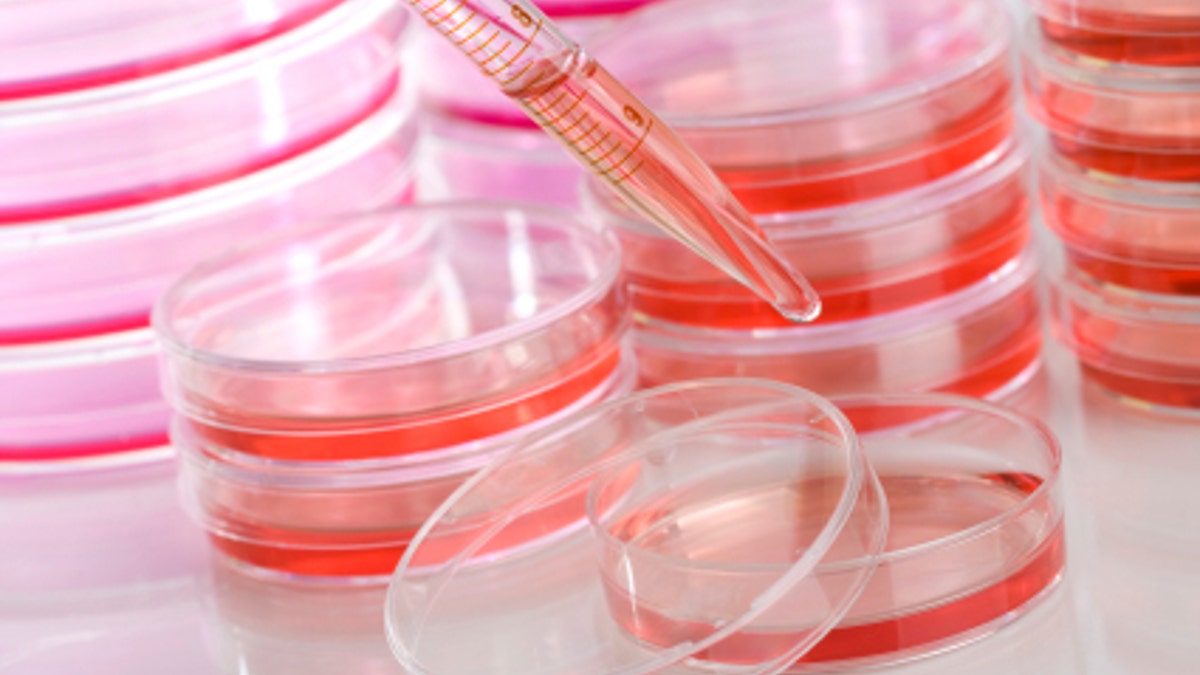
In the first procedure of its kind, skin cells taken from patients suffering from heart failure were “reprogrammed” and changed into heart muscle cells. Not only were the transformed cells healthy, but they were also transplanted into the hearts of rats and were able to integrate with the existing heart tissue.
Published in the European Heart Journal, the research examined the use of human-induced pluripotent stem cells (hiPSCs) to treat damaged hearts. HiPSCs are cells that are derived from other cells in a person’s body.
“We were able to show [in earlier studies] that you can take these hiPSCS from healthy heart patients and coax them into bonafide heart cells,” lead author Lior Gepstein, professor of medicine (cardiology) and physiology at the Technion-Israel Institute of Technology and Rambam Medical Center in Haifa, Israel, told FoxNews.com. “The question we asked in this study was whether you can do the same from an elderly individual that had suffered from advance heart failure.”
Because hiPSCs are derived from the person in need of the stem cells, they could potentially help to bypass the painful process of rejection that many transplant patients go through. According to Gepstein, if this process is perfected, it could lead to much more localized treatments.
“When there is significant damage from a heart attack, or with heart failure, where the heart doesn’t pump enough blood into circulation, patients usually need a heart transplant,” Gepstein said. “But perhaps in the future, we can take a small sample of skin and convert them into stem cells specific to that patient. Then we can only replace the area with scar tissue rather than replace the dying heart.”
In order to transform the skin cells into hiPSCs, Gepstein and his colleagues gave them a “reprogramming cocktail,” which involved delivering three genes (Sox2, Klf4 and Oct4), followed by a small molecule called valproic acid, to the nucleus of the cell.
This process turned the skin cells into heart muscle cells, or cardiomyocytes, which the researchers were able to subsequently turn into heart muscle tissue by culturing them together with cardiac tissue.
“We converted the cells back into a state that resembles their early state in the embryo,” Gepstein said. “So they highly resemble the patient’s cells at the time they were born. When you give them proper conditions, they can become any type of cell in the body.”
“This area of study has advanced very rapidly,” Gepstein added. “You can take almost any type of adult cells - hair follicles, blood cells, etc. - and reprogram them to make hiPSCS cells. Skin cells are the easiest way to do it, and you don’t need a lot of them.”
Once the tissue had formed, it was transplanted into the hearts of healthy rats, where it successfully grafted and integrated with the existing tissue.
While the procedure is extremely significant, the researchers warn that there are still many obstacles to overcome before a treatment like this can be used in humans, one of which relates to the sheer amount of cells that would be needed.
“The adult human heart is comprised of something like 4 billion cells,” Gepstein said. “When a person has heart failure, they lose about a quarter of those cells. So we would need to replace close to a billion cells. Right now, our process involves only a few million cells, so we need to scale up the procedure.”
There are also issues of safety with the procedure in that the cells could develop abnormally and become cancerous. However, to potentially bypass this concern, the scientists did not include a transcription factor called c-Myc in their original “cocktail,” – an agent that has been used before for the creation of stem cells but is also considered a cancer-causing gene. While this exclusion may lower the risk of cancer, the concern still persists.
“We also need to improve the ability of the cells to survive,” Gepstein said of the barriers. “Less than 10 percent of the cells survive right now. We need to find ways for all the cells to survive. You need to do more research in animals, and you need significant involvement in industry – you need large funding.”
Gepstein said that while human treatment of this kind is quite a ways down the road, the procedure is still important for the future of heart failure and heart attack therapy.
“I think it’s an important incremental step,” Gepstein said. “It’s the first important study of the development of this reprogramming technology. In the future, these patients who have very sick hearts can result in having very healthy heart cells unique to that specific patient.”
